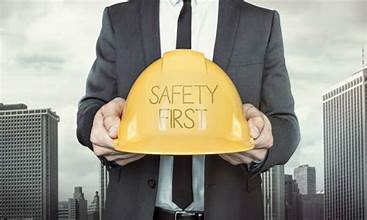Workplace safety has always been a cornerstone of responsible business operations, but in today’s fast-paced world, it has taken on even greater importance. Companies across industries are adopting innovative strategies to protect both their employees and their bottom line. From ensuring compliance with regulations to leveraging new technologies, workplace safety is evolving to meet modern challenges. Take a look at some of the ways companies are prioritizing safety and protecting their most valuable assets—people and property.
Safety and Efficiency on the Move
The logistics and transportation industry is crucial for global commerce, but it also comes with its share of risks. Companies are now taking safety measures to a whole new level by focusing on the intersection of safety and efficiency. Whether it’s ensuring that drivers are well-trained or implementing advanced fleet management systems, the goal is to minimize accidents and delays.
Modern commercial transportation relies on data and technology to monitor vehicles and drivers in real-time. Telematics systems can alert operators to risky behaviors, while predictive maintenance tools keep trucks in top condition to avoid breakdowns. By addressing safety concerns proactively, companies can keep their employees safe and enhance their operational efficiency, ensuring that goods arrive on time and in perfect condition.
Construction in NYC and Building Safely With SST Cards
Few industries face as many inherent risks as construction, and nowhere is this more evident than in New York City. With its iconic skyline and non-stop building activity, the city demands the highest standards of safety. This is why the SST card in NYC exists. It’s a requirement that ensures all workers have undergone extensive training in construction safety.
This initiative isn’t just about checking boxes—it’s about creating a culture of accountability and care on construction sites. Workers must complete specific courses that cover everything from fall prevention to proper use of equipment, drastically reducing the risk of accidents. For companies, enforcing these requirements protects employees and minimizes costly delays caused by safety violations or injuries. The SST card system is proof that when safety becomes a priority, everyone benefits—from the workers on the ground to the companies building the future.
The Rise of Wearable Technology for Safety
Technology is transforming workplace safety, and wearable devices are at the forefront of this revolution. From smart helmets that detect potential hazards to wristbands that monitor fatigue levels, these tools are designed to protect employees by providing real-time insights into their environment and physical condition.
For companies, investing in wearable technology is about creating a safer, more efficient workplace. By collecting and analyzing data, employers can identify trends and implement changes that reduce risks. Whether it’s tracking air quality in industrial settings or alerting workers to dangerous temperature fluctuations, wearable tech is making safety smarter and more proactive than ever before.
Mental Health as Part of Workplace Safety
Physical safety often takes center stage, but mental health is just as critical to a safe and productive workplace. Companies are increasingly recognizing how important it is to address things like stress, burnout, and other mental health challenges as part of their overall safety strategy.
This shift has led to the implementation of wellness programs, access to counseling services, and training sessions on managing stress and building resilience. Creating a supportive environment not only boosts employee morale but also reduces accidents caused by fatigue or distraction. When workers feel mentally and emotionally secure, they’re more focused, engaged, and less likely to make costly errors.
Automation and Robotics to Reduce Risk in High-Hazard Jobs
In industries like manufacturing and mining, automation and robotics are playing a key role in reducing workplace hazards. By taking over repetitive or dangerous tasks, machines can easily decrease the risk of injury to human workers.
For example, robots can handle heavy lifting, work in hazardous environments, or perform precision tasks that require extreme accuracy. Automation doesn’t replace the human workforce—it enhances it by allowing employees to focus on roles that require creativity, judgment, and expertise. For companies, the result is a safer, more productive operation that protects both people and assets.
Training Programs are the Foundation of Workplace Safety
At the heart of any effective safety strategy is comprehensive training. Companies are investing in programs that go beyond the basics, teaching employees how to recognize and mitigate risks specific to their roles. Whether it’s operating machinery, handling hazardous materials, or navigating complex regulations, well-trained workers are the first line of defense against accidents.
Online training platforms and virtual simulations have made safety education more accessible than ever. Employees can now easily learn at their own pace, ensuring they fully understand the material before applying it in the field. By prioritizing training, companies demonstrate their commitment to protecting their workforce and fostering a culture where safety is second nature.






